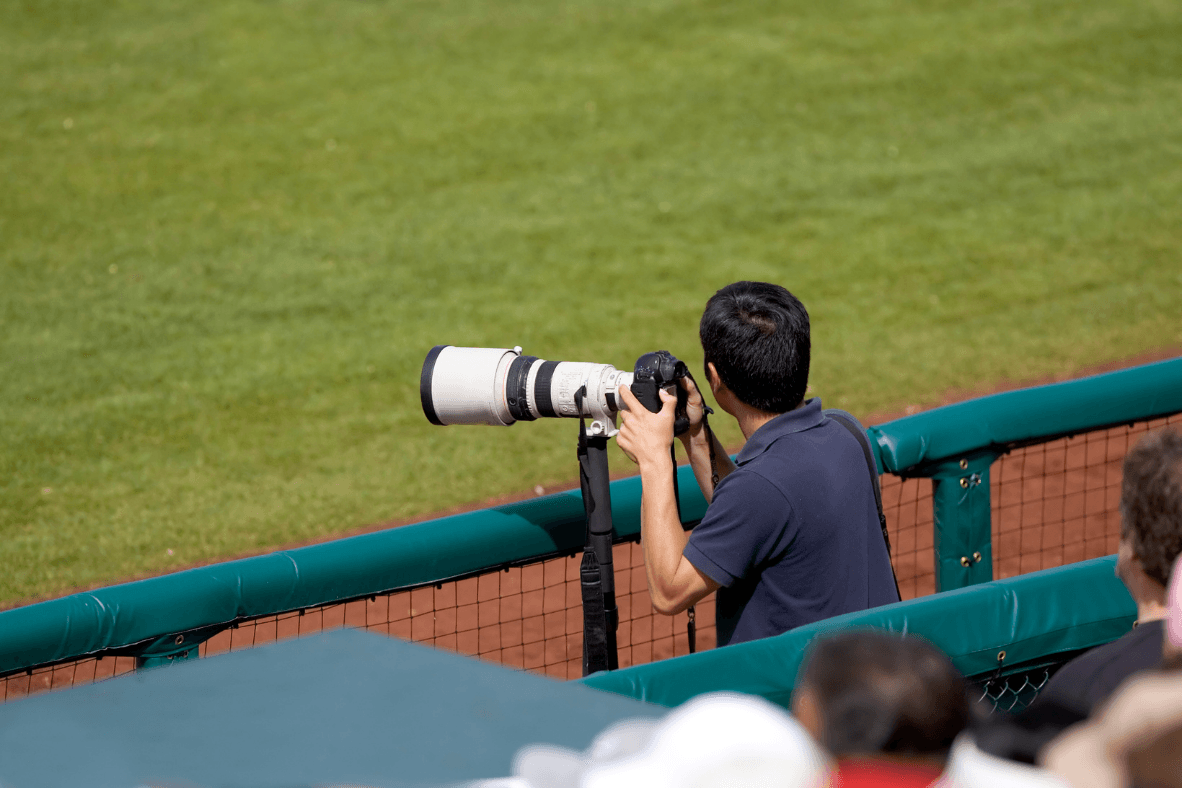Get in touch
How to Write an Editorial Page that Reflects Your Community
How to Write an Editorial Page that Reflects Your Community
Energized newspapers are at the foundation of energized communities. Community newspapers – whether delivering information in the print, on the web or in social media – must focus on local news if they are to remain relevant to readers and advertisers.
In this series of content pieces, retired news editor Jim Pumarlo talks about why he considers the editorial pages a key element of vibrant local coverage and vibrant communities.
Jim spent nearly 27 years in two community newspapers in Minnesota – in Red Wing on the state’s Wisconsin border, and in International Falls on the state’s Canadian border. For the majority of that time, he steered the news coverage as editor. He is passionate about community newspapers and believes that community newspapers still play a vital role in today’s fractured media landscape.
Also included in this module are both a detailed white paper on editorials, and an audio interview with Neil Godbout. Neil is the Managing Editor of the Prince George Citizen. His award-winning editorial page provides a perspective of how a community newspaper is making an impact locally and he describes what he believes makes a great editorial.
Section 1 VIDEO
Lecture 1 How to Write an Editorial Page that Reflects Your Community? - Part 1
Lecture 2 How to Write an Editorial Page that Reflects Your Community? - Part 2
Lecture 3 How to Write an Editorial Page that Reflects Your Community? - Part 3
Lecture 4 How to Write an Editorial Page that Reflects Your Community? - Part 4
Lecture 5 How to Write an Editorial Page that Reflects Your Community? - Part 5
Lecture 6 How to Write an Editorial Page that Reflects Your Community? - Part 6
Lecture 7 How to Write an Editorial Page that Reflects Your Community? - Part 7
Lecture 8 How to Write an Editorial Page that Reflects Your Community? - Part 8
Section 2 AUDIO
Lecture 9
How to Write an Editorial Page that Reflects Your Community?
Section 3 WHITE PAPER
Lecture 10 How to Write an Editorial Page that Reflects Your Community?
Lecture 11 How to Write an Editorial Page that Reflects Your Community? - Recap
Section 4 TRANSCRIPTION
Lecture 12 How to Write an Editorial Page that Reflects Your Community?
EDITORIAL PAGES, A COMMUNITY’S CONSCIENCE
Those who imagine Editorial Page scribes as operating out of an ivory tower, pontificating from on high, and handing down the last word on this or that topic, have it all wrong.
Good editorial writing draws on experience, community connections, research and reporting skills and an ability to be forthright and even provocative. The job is generally reserved for the most senior staff within the newspaper’s editorial department.
The task of the editorial writer is to explore an idea and advance a reasoned position rather than instruct his readers on a definitive and correct way to think about something.
Minnesota Chamber of Commerce media relations manager Jim Pumarlo, says he is passionate about editorials, having devoted himself to writing them for 22 years at two different community newspapers in the state.
He refers to the editorial pages of a paper as “a marketplace of ideas”.
Intriguingly, editorial pages were unknown in early North American newspapers because the entire publication tended to constitute a political screed.
According to the Centre for News Literacy at Stony Brook University’s School of Journalism in New York: “The U.S. press did not adopt the idea of neutrality as a noble step in our common search for truth and meaning.”
Rather, says its website — http://drc.centerfornewsliteracy.org/content/short-history-opinion-journalism — “it was a business decision.
“Newspapers had been niche products, produced for a political party and read by party members. But by broadening the appeal, getting rid of partisan ranting, you could make more money.”
In 1841, former U.S. congressman Horace Greeley founded The New York Tribune, where for the first time, a separate and distinct Editorial Page was designated. (Then, later on, in the early part of the 20th Century, individual opinion writers started being accorded special space within a newspaper.)
Of course, in smaller communities, the role of the editorial page is to advance debate on local matters and, ideally, the editorial writers should themselves be local. “Local editorials are the franchise of local newspapers,” Pumarlo says. “They are the best example of leadership by community press.”
Editorials highlighting national issues, of course, are easier to write because they tend to generate less blowback from readers. But the editorial writer at a smaller newspaper really should be tackling the truly local stuff, be it a misguided school board decision, or a wrong-headed move by a town’s economic development commission. Or, alternatively, a praiseworthy decision by a municipal council.
At a community paper, staying local “often means offering commentary on issues that necessarily involve friends, neighbours and associates, individuals you see and do things with on a regular basis.”
Pumarlo says that can be tough, and there may inevitably be some days the editorial writer in a small town does not want to leave his house.
The imperative is to be fair and balanced in coverage of all political parties, organizations and issues so that everything and everyone over time receives their “editorial due”.
For those writers who may feel they do not have a right to weigh in on a particular subject, he has this advice: “First, not every editorial has to solve the problems of the world or your community. Second, don’t put yourself in an ivory tower or position your editorials as the right opinion.”
To be sure, not every paper has the luxury, as does the New York Times, of having 18 reporters on its editorial board, each of them expert in a specific subject area, attending the daily edit-board meeting.
The best way for a lonely editorial writer to develop the confidence to write a newspaper’s views is to build relationships within the community, with people you can derive ideas from, and bounce ideas off.
Pumarlo suggests recruiting a kitchen cabinet, or informal network of editorial advisors. “Identify individuals, beyond elected officials, who you can regularly connect with on a formal and informal basis.”
Ideally, these people should reflect local demographics and represent a cross-section of community constituencies. Maybe the United Way, chamber of commerce or organized labour.
Even if a formal editorial board of journalists does exist at a newspaper, “it is important to go beyond the newsroom, beyond the newspaper.” Perhaps the editorial board could invite two community members to serve on a rotating basis, Pumarlo suggests.
An editorialist’s opinion may wind up running counter to those expressed by his kitchen cabinet but these advisors may still be helpful to him in the shaping of his views.
In any event, the ultimate arbiter of the newspaper’s editorial opinions usually is the owner, publisher or editor-in-chief who always retains a right to veto viewpoints expressed. It is not an accident that the top of the Editorials Page usually is the place where the top people at the paper are identified.
One good way to generate ideas for editorial topics is to keep an eye on a calendar of events. “Editorials should not be an afterthought. The dynamics of the entire editorial page should be an integral part of newsroom planning.”
Pumarlo notes, “many things occur like clockwork in your community,” so an editorial calendar enables an editorial writer to be prepared. In advance of a local budget, for example, the editorial might want to present an early analysis of the proposed financial blueprint.
Ideas also can and should feed off news coverage. “Newsrooms should routinely brainstorm ideas for editorials just as they do for stories.”
Editorials should strive to educate, enlighten and occasionally entertain.
They are meant to challenge a reader’s personal beliefs, “forcing you out of your comfort zone,” frustrating or angering the reader. Or, they may comfortably reinforce a reader’s positions.
Editorials must be thoroughly reasoned and crafted, particularly when offering comment on a contentious topic. On a practical level, Pumarlo instructs, “introduce the subject, present the pros and cons and reach a conclusion.” Always acknowledge opposing views and address them, to demonstrate that the writer has a thorough understanding of the issue.
Editorial writers need to be well informed and prepared to research-to-death the topics they are writing about. There will always be someone out there in the community who may know more about the issue than the writer, and be more than ready to poke any holes that are left open to poke.
The arguments that are advanced on any side of an issue should be substantiated and bolstered with evidence based on statistics, prior experience elsewhere or historical experience, expert testimony or the expressed opinions of community leaders.
The best editorials shed new light on an issue, or reveal some new facts about a topic, or propose a fresh concept to address a problem outlined in the piece.
Any conflicts of interest should be declared.
And editorial writers cannot be wimps. It is their job to pen editorials that will be bold, that will get people talking and have readers clearly remembering their message. “Leave an impression. Nondescript editorials are easily forgotten.”
Editorial boards must pay special attention to being consistent and always explore their archives to see what was written in previous editorials on the same subject. “Newspapers that flip-flop on issues will lose their credibility.”
That is not to say that an editorial board cannot change its position when circumstances change, but it should do so in recognition that it is, in fact, altering its opinion. It is also useful to acknowledge the shift in thinking within the editorial.
Pumarlo also has helpful advice on the running of Letters to the Editor, which often appear on the same page as the editorials. In a community newspaper, reader feedback takes on special importance and the writers tend to be less ‘anonymous’ than those who write to larger national papers.
Create policies, he counsels, that limit the length of missives and the frequency of permissible author contributions.
Priority should be given to local opinions, unless a letter is received from a recognized expert on a given topic who lives outside the area. And letters to the editor should feature topics that relate to public issues.
Pumarlo says mass-produced letter should be rejected, as should most thank you letters praising local stores or organizations — unless there is an interesting yarn that accompanies the gratitude expressed.
Authors’ identities should be verified and, when relevant, have their particular expertise noted, as in a letter on the pros and cons of nuclear energy from a nuclear engineer.
To Recap:
• When writing an editorial, choose a well-defined topic that is timely and relevant to the readers;
• Declare your agenda outright, unequivocally;
• Build your argument, stating your thesis, acknowledging opposing viewpoints and include any
statistics, quotations or analogies that can bolster the opinion being expressed;
• Editorials are meant to convey constructive criticism so it is a good idea to provide possible solutions. It is not sufficient just to condemn, a better alternative should be advanced.
• An editorial, reflecting both principle and fact, should be relatively short (perhaps 400 words), precise and well organized.
• Ensure the editorial is absolutely factual and accurate. Nothing will work against an argument that is being advanced like a factual error. Do not express emotion or use slang.
• Be prepared for plenty of feedback, and be responsive.



Modules
Do you work in NewsMedia?
Contact us for more information.
Request Access - Form
Thank you for requesting access to NewsMediaPlaybook.com.
We will review your submission and back to you as soon as possible.
Oops, there was an error with your request.
Please try again later.
All Rights Reserved | BCYCNA







